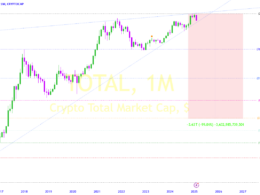Bitcoin is starting to move independently of U.S. equities, showing behavior more in line with traditional safe-haven assets like gold — a trend some analysts say underscores its evolving role in global finance.
Over the past two weeks, Bitcoin has gained 12%, shrugging off economic tensions sparked by rising tariffs between the U.S. and China. As of mid-April, the U.S. ramped tariffs on Chinese imports to 125%, with China responding in kind. Despite the growing trade friction, Bitcoin remained notably strong, even as traditional markets like the S&P 500 wavered and altcoins lagged.
According to Nansen CEO Alex Svanevik, Bitcoin is starting to resemble gold more than a tech stock, which he sees as a sign of increasing investor confidence in its long-term value. He pointed out that while altcoins and stock indexes showed signs of stress, Bitcoin held firm.
However, he did caution that a broader recession could still impact its trajectory, as it would any asset viewed through a risk lens.
Still, there are tailwinds for Bitcoin coming from Washington. President Trump’s executive order earlier this year laid the groundwork for a U.S. Strategic Bitcoin Reserve, initially composed of confiscated BTC, with plans to expand it using “budget-neutral” strategies.
One idea being explored is using tariff revenue and revaluing gold certificates to create financial room for Bitcoin accumulation — without selling any gold, according to Bo Hines, a key figure in the administration’s digital asset policy advisory group.
At the same time, recession fears are intensifying. JPMorgan now pegs the odds of a U.S. downturn in 2025 at 60%, up from 40%, citing persistent trade frictions and hefty tariffs. The bank expects the Federal Reserve to begin rate cuts by September and continue easing into 2026, potentially lowering rates to 3%.
As global economic uncertainty deepens, Bitcoin’s ability to stand apart from traditional markets could solidify its status as a modern-day hedge.







